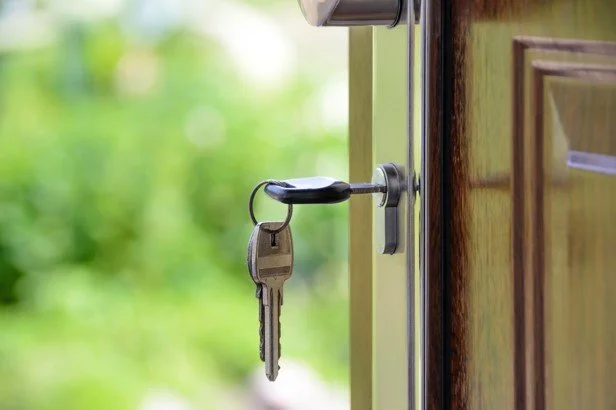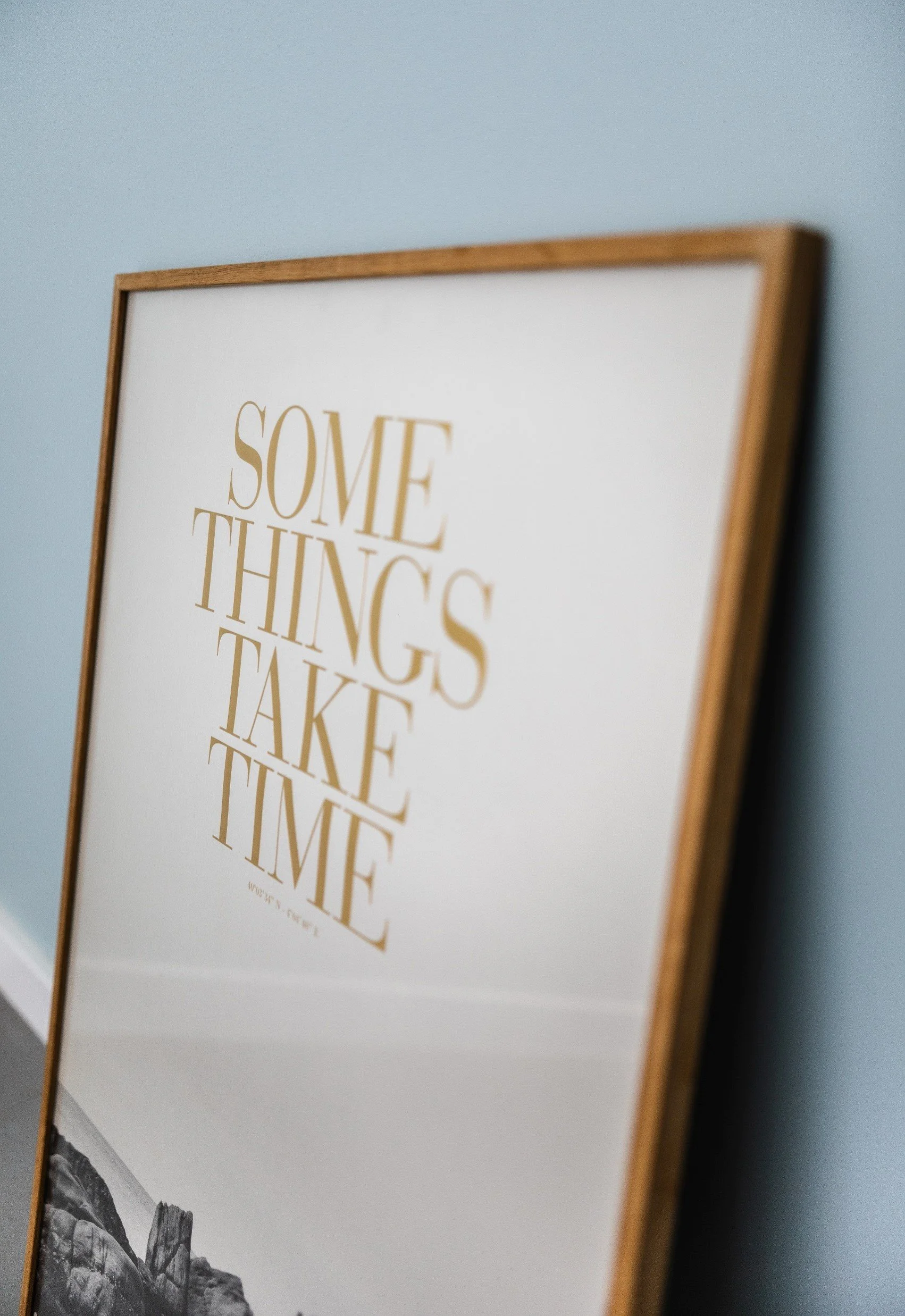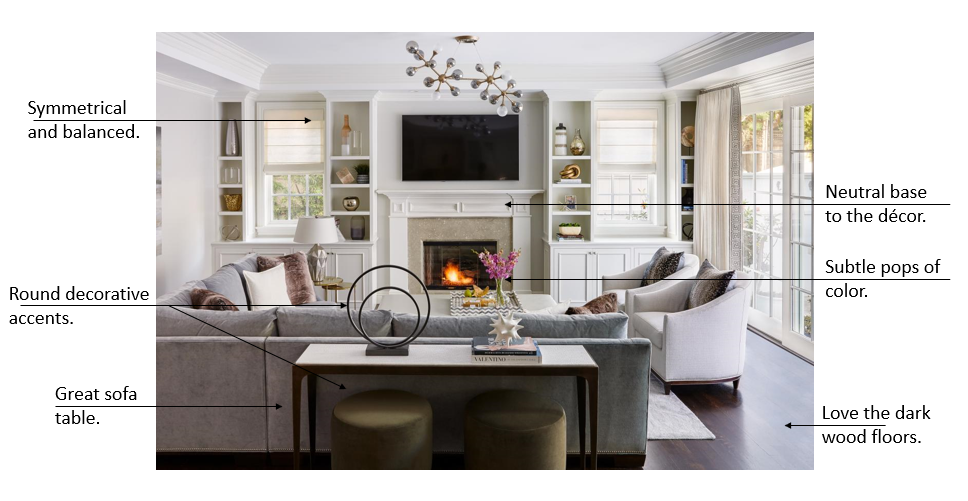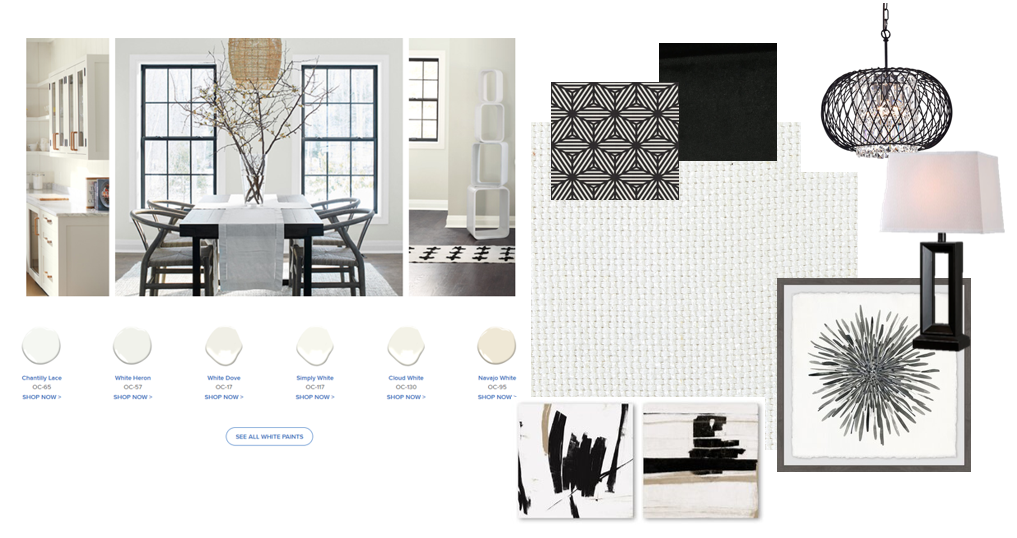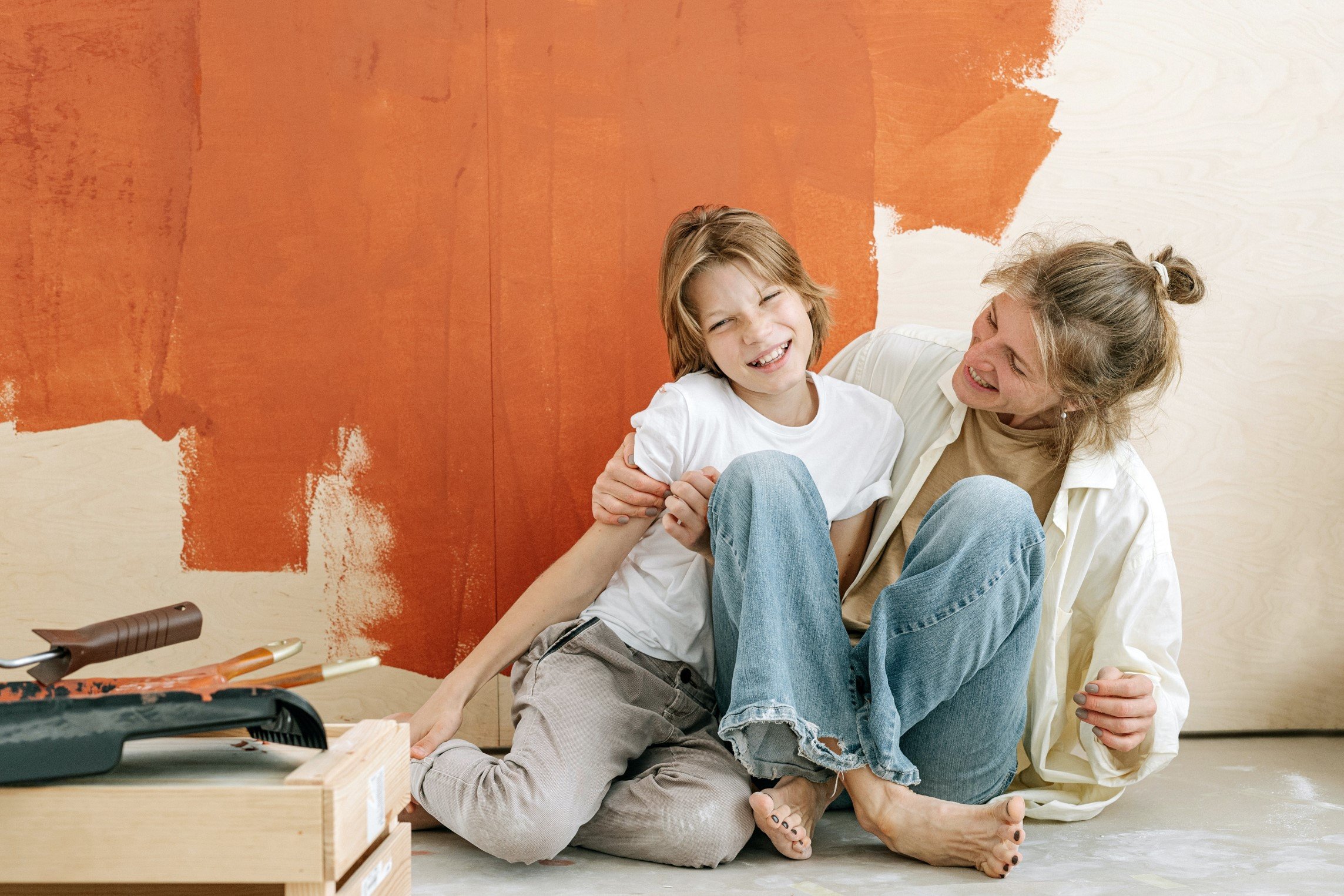I can’t decorate. I hear this from some of my clients now and again.
Similar statements are, I don’t know what looks good together or, I don’t have a knack for decorating.
No matter how it’s phrased, the sentiment is always the same: I don’t trust myself to make these decisions.
Feelings of uncertainly for where to start, or intimidation around the “creative” things necessary to get a room finished, can cause stress.
If you feel this way, it doesn’t mean that you’re bad at decorating. It only means that you need some clarity and a tangible way to start your project.
Today I’m talking about common triggers for why decorating overwhelm happens and 5 ways to avoid it.
Let’s get into it.
Decorating overwhelm often creeps up after some specific changes occur.
Changes like moving to a new home
PhotoMIX Company
Or renovating your existing house.
Rene Asmussen
Both involve making lots of decisions and interacting with lots of different people.
After a while, you become worn out from making decisions.
The initial excitement and momentum to get you to the finish line, ie: getting the keys to the new house or the day the contractors finally pack up and leave, is gone.
If you’ve experienced this yourself, you can thank decision fatigue for this feeling.
Liza Summer
Put simply, decision fatigue is feeling like you absolutely can’t make one more decision...
Yep, it’s a real thing and it’s tough to get past, believe me I know.
For me it was like this:
The adrenaline that got me through the entire process from finding my house, competing to win the bid, getting the financing and legal stuff done, and then packing up, and physically moving my life to a new place, was exhausting.
cottonbro
I had boxes piled in my office for months before I even had the energy to think about decorating let alone unpacking.
Another way decision fatigue can get the best of you is by getting caught up believing that, just one decorating style is the only way you can make you home look how you want.
I think of this as the decorating equivalent of “painting yourself into a corner”.
Let me explain.
If you limit your inspiration exploration to only things specific to one decorating style, you trigger overwhelm when you discover something else you really like.
It happens like this:
You have your mind set on a Mid Century Modern looking sofa, but then you find a transitional sofa that you really love.
You go back to the store over and over or you scroll back to the website to read every detail and dimension.
You notice that nowhere in the description does it say anything remotely related to MCM and it causes you to pause.
Pilgrim Furniture & Mattress City
A few days go by, and you’re still stuck on the sofa that you really love all the while trying to reconcile that it’s not the ‘style’ that you’re envisioning.
Rather than adjusting your scope of the style choice, you get frustrated and postpone the decision until you can figure out the next step.
Analysis paralysis + decision fatigue = overwhelm.
SHVETS production
It’s important to pay attention to these thoughts when they creep up so you can push past them and keep yourself on track.
This isn’t hard to do because once you know what’s triggering you, you’ll be able to zap it before the overwhelm sets in.
So, how do you do that?
Here’s five ways to avoid that dreaded decorating overwhelm:
1. Know that seeing things together, in some visual format, helps you to see them clearly and objectively, instead of stressing out over wondering how they’ll look together.
Michael Helwig Interiors
2. Figure out how you want your room to feel.
This is an important way to engage your creative mind before you make specific plans or purchases.
Lisa Fotios
3. Remember that one inspiration piece can help you to design an entire room.
Steve Johnson
4. Take your time. I know everybody wants to have their project done as fast as possible, but taking your time is important.
You’ll know when something is right and until your gut tells you that it is, slow down.
Duane Mendes
5. Last, remember that nothing is permanent. If you don’t like it, you can change it.
Shahzin Shajid
Let’s unpack all of this in more detail.
Here’s a a Fun Way to See Things Together:
Start a Decorating Binder
This is a binder with pictures that you like. Much like a mood board, your binder visually gets your thoughts together so they can be analyzed, tweaked, and maybe acted on later.
Noticed the word later.
This is not a to do list, this is you compiling things that you like, so you can see how they look together.
It’s not about what style goes with another or getting caught up in what something is called.
Throw the labels out the window and just focus on what looks good to you in the moment.
Look for pictures of rooms you like, and pay attention to details like wall color, the color and pattern of the area rug, the shape and color of the upholstery or wood furniture.
HGTV
Notice how they style the décor: is it decked out with lots of details or minimally styled and scaled back?
As you notice these things, think about why you like the pictures.
Is it because they use a particular color again and again throughout? Is it because a particular shade of paint on the wall looks amazing to you?
Get into the why. And, if you don’t quite know why, other than you just like it; that’s okay because the reason will become clear when it needs to.
Things to include in your decorating binder:
Include paint swatches, fabric clippings, pictures of art that you like, pictures of rugs and anything that lights you up.
What does this do?
It shows you that you can pick out decor that you like.
You’re not committing to anything yet. You’re just having fun letting yourself dream.
Even better, you haven’t spent any money, so you don’t have to worry about whether these things fit into your budget or not.
Decide on a Feeling
Mikhail Nilov
You don’t have to pick up a single tool or spend a penny thinking about how you want your room to feel.
Again, this isn’t about any decorating style, this is about how you imagine your room feeling after it’s done.
You can make a bit of a game out of this, something like Mad Libs:
Mad Libs
I want my room to feel __________, where I can enjoy _________, and not have to think about ___________.
Maybe something like:
I want my room to feel cozy, where I can enjoy watching TV, and not have to think about work.
Just fill in the blanks:
When I’m in this room, I want to ___________. It’s important that I feel ___________ and not ____________ when I’m here.
Or
I’m really drawn to _____________ (furniture type: sofa, sectional, upholstered Bed, etc.) because I find them to be _____________. I can really imagine feeling _____________ when I hang out in here because _____________.
This seem kooky, I know. But it’s a helpful way to get your mind grooving in the direction of feeling instead of function.
Truth be told, once you get the feeling down, function falls right in line because you’ll naturally avoid things that hinder function in favor of a better feeling room.
For example, you won’t want to navigate awkwardly placed furniture that messes with the relaxed vibe you’re going for.
You’d probably change something to make the flow in the room better instead, right?
That’s because you’ve established how you want to feel in the room and thus functional aspects like furniture placement needs to support that feeling.
Find One Inspiration Piece
This could be something from your decorating notebook, or a piece of art you already have.
Maybe it’s an area with rug with a colorful pattern, or a piece of art that you love.
When you have this piece, do a little forensic inspection of it.
I often find these inspiration pieces can help you uncover a ton of unconscious inspiration for everything from wall color to upholstery and even accessories.
If you have a couple of amazing pieces of inspiration, do this exercise for each of them.
What it does is it helps you to visualize the potential for how the room could look.
It doesn’t set anything in stone, but it gives you a fun and creative way to explore the potential finer details without making any commitments to them.
If you really like to crunch numbers, you can make notes about where to get these things you pull together and how much they cost.
Olya Kobruseva
Sometimes having the numbers right in front of you does a lot to alleviate the stress of not knowing what a decision like this will cost.
So, you’re not making buying decisions but you’re just getting the cost written down so you can adjust and make appropriate buying decisions when you have things set later. Makes sense?
Take Your Time
Taking your time allows you to not feel rushed like you must make your decision right now.
External things like store sales are designed to make you to decide.
Salespeople especially are trained to create urgency. That’s just the name of the game.
Your job is to always do a gut check to make sure you’re not getting pressured to buy or that you’re falling prey to FOMO, fear of missing out.
Michael Helwig Interiors
Guess what? Another sale will happen, and another after that, and so on until the end of retail history.
In a different way, taking your time will also help you avoid the pitfalls of decorating exceptions.
These are things like thinking you have to be 100% done with your room because of a holiday or event that’s coming.
Kelsey Chance
A decorating exception is buying a huge dining table because you have dinner parties once or twice a year, especially if you don’t have the space for it.
Or getting a giant sectional because you host a Super Bowl party once a year.
Again, if you don’t have the space for it or the butts to sit on it every day, why would you buy it?
My rule is if it doesn’t support your everyday life and how you live the other 364 days, it’s a decorating exception.
Don’t fall into that trap.
Nothing is Permanent
Think about that for a minute.
I’ve heard, I don’t want to make a mistake that will be permanent.
Usually a statement like this means, I don’t want to paint a wall a color I’ll hate because it’s permanent or I don’t want to put a hole in my wall to hang a picture I’ll end up not liking because that hole is permanent.
Blue Bird
Much of this overwhelm I mentioned earlier comes from the fallacy of permanence.
Switch from the idea that something is permanent to, I’m trying it on…
Equate something like changing the color of your wall like trying on a new outfit.
Artem Beliaikin
Chances are if you’re shopping for new clothes, you’re probably more apt to try something on to see if it looks good and feels right. Agreed?
Well, if you’re going to paint a wall, get a sample of all the colors you like and paint swatches of each on your walls.
You’re “trying on” the colors before you buy.
Have fun with it.
Make the swatches big, and paint smiley faces next to the ones you like best.
You’ll cover up all these goofy scribbles when you paint over it later.
Get the kids involved. Put a paintbrush in their hands and let them go wild!
Ivan Samkov
Pay attention to how each color makes you feel.
After it dries look how it relates to everything else in the room: natural lighting, flooring and other “really permanent” things.
This is totally another gut check exercise that will make it fun and easy to see your top picks instead of stressing out about hypotheticals.
When you start, even with gathering inspiration, you build momentum, and one activity leads into another.
What about putting holes in your wall?
Say you hung a picture on your freshly painted wall, and you find you don’t love it.
An easy fix for that is mix a tiny amount of spackle with your wall color and fill the holes.
Ksenia Chernaya
When the mixture dries, you won’t even see the hole.
Easy peasy.
Even though you found you didn’t like the picture, it didn’t leave a permanent hole. You were able to fix it not problem…
So, there you have it. 5 ways to avoid decorating overwhelm.
When you remember to:
Find a way to look at things together. You’ll see how all the details work or not work. This helps you to build confidence and the train your eye.
Pay attention to how you want your room to feel when it’s done and then let your feelings guide you through the process of picking furniture and décor.
Find one piece of inspiration. This can potentially inform all the decisions you make. Often, finding the way you want the room to feel comes from discovering this inspiration piece: a beautiful rug, a piece of art, pillows, etc.
Take your time. This helps you to process what you relay want. The pressure is off, so don’t let anyone or the timing of other things dictate your decisions.
Remember, nothing is permanent. You can add and remove paint, décor, even walls if you need to… If you follow the steps above, the chance of making a decision that you really don’t like, and having to change it, will be far less.
Now it’s your turn, what else would you do or recommend for overcoming decorating overwhelm?
Have you had experiences where you felt very overwhelmed and then had a thought pop-up that alleviated all of that stress?
Tell me all about it in the comments below..
Join the Fun!
If you enjoyed this post and you want to keep seeing my weekly blog, the best way to do that is to subscribe.
You can subscribe by downloading my 11 Secrets Only Designers Know to Make Your Space Rock. If you’re curious about how decorators and designers make a home look magazine ready, you’ll love taking a gander at these 11 secrets. You’ll learn how to style your room from the floor up and it will work for ANY space you have.
I write about small space design and decorating, sustainable furniture options, positive self care and a variety of do-it-yourself home décor.
I’d love to connect with you!
“Michael Helwig was top-notch, very professional and responsive to my needs. He allowed me time to explore ideas and try out a variety of combinations until we found the perfect fit. Michael provided detailed information and offered beautiful ideas to make my dream living room become a reality. The furniture he sourced has totally transformed my living room space. Everyone that has seen my new living room has one word, WOW! A special thank you to Michael for a wonderful experience.”
“Michael was very knowledgeable and guided us, with great patience and good humor, through the process of designing our dining room and helping us find the perfect sleeper sofa. He offered really helpful advice when we asked questions - which was often - but at no time did we ever feel pushed. He helped me when I felt like I couldn’t make one more decision. When my new furniture finally arrived I realized everything down to the pillows was perfect. I couldn’t be happier!”
Michael is Principal designer and blogger at Michael Helwig Interiors in beautiful Buffalo, New York. Since 2011, he’s a space planning expert, offering online interior e-design services for folks living in small homes, or for those with awkward and tricky layouts. He’s a frequent expert contributor to many National media publications and news outlets on topics related to decorating, interior design, diy projects, and more. Michael happily shares his experience to help folks avoid expensive mistakes and decorating disappointments. You can follow him on Pinterest, Instagram and Facebook @interiorsmh.


